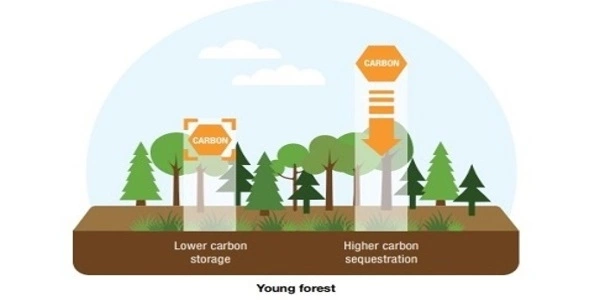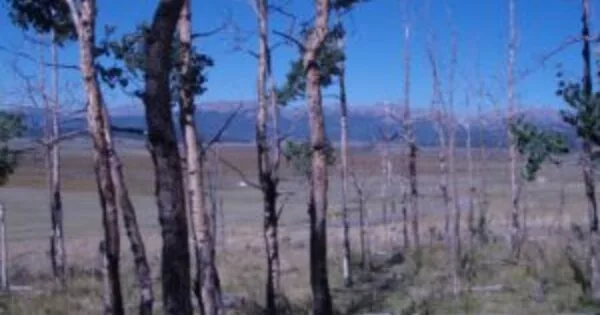Standing forests also help to mitigate the effects of climate change. They absorb greenhouse gases, regulate water flows, and shield coastal communities from extreme weather events and sea level rise. Furthermore, they provide routes for migrating plant and animal species to resilient habitats. Forests and trees are critical to combating climate change.
Researchers assess the risk of climate change to forests along three dimensions: carbon storage, biodiversity, and forest loss due to disturbances such as fire or drought. The findings show that forests in some areas face clear and consistent threats. In other regions, the risk profile is less clear because different approaches that account for different aspects of climate risk produce contradictory results.
Forests are in a delicate, lethal dance with climate change, sucking carbon dioxide out of the air with billions of leafy straws and supporting abundant biodiversity, as long as climate change, with its droughts, wildfires, and ecosystem shifts, doesn’t kill them first.
In a study published in Science William Anderegg, inaugural director of the University of Utah’s Wilkes Center for Climate Science and Policy, and colleagues quantify the risk to forests from climate change along three dimensions: carbon storage, biodiversity, and forest loss from disturbance, such as fire or drought. The results show forests in some regions experiencing clear and consistent risks. In other regions, the risk profile is less clear, because different approaches that account for disparate aspects of climate risk yield diverging answers.
“Large uncertainty in most regions highlights that there’s a lot more scientific study that’s urgently needed,” Anderegg says.
If forests are to play a significant role in climate mitigation, a massive scientific effort is required to better shed light on when and where forests will be resilient to climate change in the twenty-first century.
William Anderegg
An international team
Anderegg assembled a team including researchers from the United Kingdom, Germany, Portugal and Sweden.
“I had met some of these folks before,” he says, “and had read many of their papers. In undertaking a large, synthetic analysis like this, I contacted them to ask if they wanted to be involved in a global analysis and provide their expertise and data.”
Their task was daunting: assess climate risks to the world’s forests, which span continents and climes and host incredible biodiversity while storing massive amounts of carbon. Previously, researchers attempted to quantify forest risks by using vegetation models, relationships between climate and forest attributes, and climate effects on forest loss.
“These approaches have different inherent strengths and weaknesses,” the team writes, “but a global scale synthesis of approaches is lacking.” Each of the previous approaches looked into a different aspect of climate risk: carbon storage, biodiversity, and the risk of forest loss. The team pursued all three in their new analysis.

Three dimensions of risk
“These dimensions of risk are all important and, in many cases, complementary. They capture different aspects of forests resilience or vulnerability,” Anderegg says.
Carbon storage: Forests absorb about a quarter of the carbon dioxide that’s emitted into the atmosphere, so they play a critically important role in buffering the planet from the effects of rising atmospheric carbon dioxide. The team leveraged output from dozens of different climate models and vegetation models simulating how different plant and tree types respond to different climates. They then compared the recent past climate (1995-2014) with the end of the 21st century (2081-2100) in scenarios of both high and low carbon emissions.
On average, the models showed global gains in carbon storage by the end of the century, although with large disagreements and uncertainty across the different climate-vegetation models. But zooming in to regional forests and taking into account models that forecast carbon loss and changes in vegetation, the researchers found higher risk of carbon loss in southern boreal (just south of the Arctic) forests and the drier regions of the Amazon and African tropics.
Biodiversity: Unsurprisingly, the researchers found that the highest risk of ecosystems shifting from one “life zone” to another due to climate change could be found at the current boundaries of biomes — at the current transition between temperate and boreal forests, for example. The models the researchers worked from described changes in ecosystems as a whole and not species individually, but the results suggested that forests of the boreal regions and western North America faced the greatest risk of biodiversity loss.
Disturbance: Finally, the authors considered the risk of “stand-replacing disturbances,” or events such as drought, fire, or insect damage that could wipe out large swaths of forest. The researchers used satellite data and observations of stand-replacing disturbances between 2002 and 2014 to forecast how common these events might become in the future using projected future temperatures and precipitation. Under these conditions, both the boreal forests and the tropics are at risk.
“Forests store enormous amounts of carbon and help to slow the rate of climate change,” Anderegg explains. “They are home to the vast majority of the Earth’s biodiversity. And they can be extremely vulnerable to disturbances such as wildfires or drought. Thus, it’s important to consider each of these aspects and dimensions when thinking about the future of Earth’s forests in a rapidly changing climate.”
Future needs
Anderegg was surprised that the high-risk spatial patterns did not overlap more across the different dimensions. “They capture different aspects of forest responses,” he says, “so they won’t be identical,” he says, “but I do expect some similar patterns and correlations.”
Models are only as good as the foundation of scientific understanding and data on which they are built, and the researchers write that this study reveals significant understanding and data gaps that may contribute to the inconsistent results. Global biodiversity models, for example, do not account for the dynamics of growth and mortality, nor do they account for the direct effects of rising CO2 on species. Furthermore, models of forest disturbance do not account for regrowth or species turnover.
“If forests are to play a significant role in climate mitigation,” the authors write, “a massive scientific effort is required to better shed light on when and where forests will be resilient to climate change in the twenty-first century.”
Next steps, according to Anderegg, include improving models of forest disturbance, studying forest resilience after disturbance, and improving large-scale ecosystem models. The University of Utah’s newly established Wilkes Center for Climate Science and Policy aims to provide cutting-edge science and tools to decision-makers in the United States and around the world. The authors created a visualization tool of the results for stakeholders and decision-makers for this study.
















